
Málaga
A perfect combination of culture, sun and sand
This Andalusian city provides a perfect combination of culture, sun and sand. Over the centuries, it has been home to many civilisations. This includes the 800 years of Moorish rule after the Umayyad conquest.
It is in the heart of the Costa del Sol, so you can enjoy its beaches and stroll along its promenades.
-
MUST-SEE
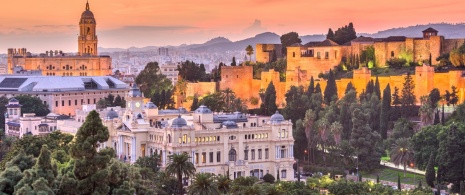
Alcazaba and Gibralfaro Castle
Two great monuments dating from the Moorish occupation. The Alcazaba was the palace and fortress of the city's Islamic rulers and represents a fusion of Roman, Moorish and Renaissance cultures in a compact space, creating an exceptional enclave, and the castle was built to protect it. They both offer stunning views of Malaga and the sea.
The Arab Baths or Hammam of Ronda
Located on the outskirts of the city, these are among the best preserved in Andalusia. You can see how this type of building, so important in Islamic culture, operated.
Castillo del Águila de Gaucín
Also on the outskirts of the town, this castle is situated on top of a rock, near which the founder of the Medina Sionia, Guzmán el Bueno, died.
The Al-Andalus Mosque
Also known as the Mosque of Malaga: an Islamic centre located in the Andalusí Cultural Centre, at 3 Calle Ingeniero de la Torre Acosta. It has a capacity for 1,000 people.
Catedral de la Encarnación
Known as 'La Manquita' due to the lack of its tower, it was commissioned by the Catholic Monarchs in the 16th century. It is located in the historic centre of the city and was built on the site of a mosque-Aljama. The cathedral's interior is influenced by Renaissance and Baroque styles.
Teatro Romano
Located at the foot of the Alcazaba hill in the western part of the city. It was hidden underground for centuries from the time of Augustus. The Arabs used elements of its construction, such as capitals and column shafts, for the benefit of the Alcazaba.
Picasso's Malaga
A tour of important places in the artist's life, such as the house where the painter was born, the Picasso Museum and the church where he was baptised.
Interesting museums
In addition to the Picasso, Malaga has around thirty museums. They include the Carmen Thyssen, the Malaga Pompidou Centre and the Russian Museum Collection of St. Petersburg.
San Telmo Aqueduct
Built in the 18th century, this was a major engineering feat to improve the city's water supply. It is considered to be one of the most important hydraulic works of its century in Spain, and is located in the district of Ciudad Jardín.
Day trips from Malaga
You can take a day trip to the impressive city of Ronda, or make the most of the Costa del Sol and go as far as Marbella or Nerja.
Flamenco
Has been declared Intangible Cultural Heritage of Humanity since 2010, and is part of Malaga's idiosyncrasy and character. Its music, song and dance can be enjoyed at various festivals in Malaga throughout the year. You can check out options for museums, tablaos and cultural venues on the Malaga tourism website.
-
WHERE CAN YOU GO SHOPPING?
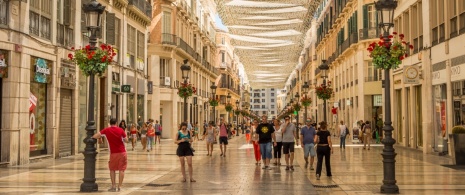
Malaga is also an excellent place for shopping. There are more than 1,000 shops in the historic city centre. Calle Larios is particularly noteworthy, full of luxurious shops and international brands. If you're looking for something traditional, you'll love the craftsmanship. Pottery, for example, would be a good souvenir, as Malaga has been famous for its gilded ceramics since Moorish times.
On the shores of the Mediterranean there is a place where shopping becomes a complete experience, we are talking about Muelle Uno, located inside the Port of Malaga. There are also other well-known markets such as the Soho market or the one in the Plaza de la Merced.
If you prefer to do your shopping in a shopping centre, you can do it in the luxury outlet McArthurGlen.
We recommend you check this website to find the right option for you.
-
WHAT CAN YOU EAT IN MALAGA?
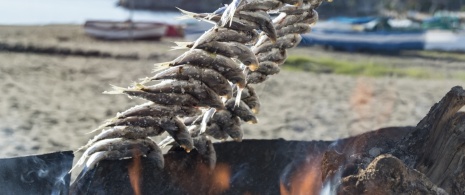
Malaga's seafaring tradition has inspired the city's recipes for centuries. You'll find dishes familiar to any palate, from the now international espeto (fish skewered on long, thin rods) to noodle casserole or Malaga prawns. Enjoying tapas of boquerones en vinagre (anchovies in vinegar) or almejas a la marinera (clams in seafood sauce), contemplating the blue of the Mediterranean in beach bars and breathing in the salty air of the bay is one of those experiences you will want to repeat over and over again along Malaga's gastronomic route.
Typical breakfasts in Malaga are the classic pitufo (bread with manteca colorá, zurrapa or tomato and olive oil) and tejeringos, Malaga's traditional handmade churros, accompanied with hot chocolate.
Vegetarian and halal food options are also available. Take a look at the outside of the establishments, as they usually have a sign or identifying label.
To experience haute cuisine, you can visit the city's Michelin-starred restaurants.
-
HALAL HOTELS
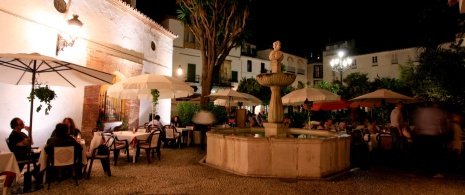
Malaga provides a wide range of accommodation, such as flats and hotels in the city centre and on the outskirts of the city with a variety of prices and halal options.
-
HOW TO GET TO THE CITY?
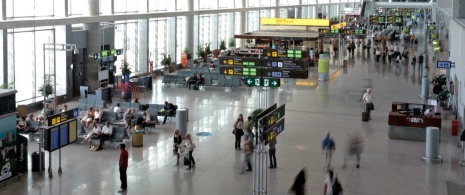
You can fly into Malaga-Costa del Sol airport to get to the city. You can also get there by train, as the María Zambrano station offers connections to Madrid, Barcelona and other Spanish cities. Another option is to travel by bus, with several companies running services from various locations in Spain. If you prefer to drive, Malaga is well connected by road via motorways such as the AP-7 and the A-7.










